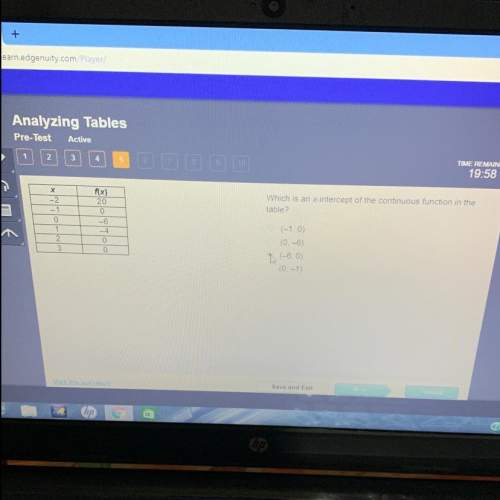
Mathematics, 26.01.2021 21:00, Kazya4
Task 4: Changing Dimensions
How would a change in one measurement of an object affect its perimeter, area, surface
area, or volume? Would it increase or decrease by the same amount? Would it increase
or decrease proportionally?
a. A rectangle has a length of 3 inches and a width of 5 inches. How would the
perimeter and the area of the rectangle change if one of the dimensions were tripled?
How would the perimeter and the area change if both dimensions were halved?
Based on these numbers, is it possible to know how the perimeter and the area of
any rectangle would change if one dimension were doubled? How about if both were
doubled? If it is possible, explain how it would change
Type your response here: The perimeter will stay the same and the rectangle
would be half its size. The perimeter would be 30 inches if you double one or
the other. If both of the dimensions are doubled then the perimeter would also
double which would make it 60 inches.
b. In part a you were given specific changes to make to help determine how the
perimeter and area of the object would change in a general situation. Use the same
system of experimentation to determine how the circumference and the area of a
circle would change if its radius were doubled or halved.
Type your response here:
C. How would the surface area and the volume of a cylinder change if the radius and
the height were doubled? How would the surface area and the volume of a cylinder
change if the radius was doubled and the height was tripled?
Type your response here:

Answers: 2
Other questions on the subject: Mathematics

Mathematics, 21.06.2019 19:30, leannamat2106
Which statements are true? check all that apply. the line x = 0 is perpendicular to the line y = –3. all lines that are parallel to the y-axis are vertical lines. all lines that are perpendicular to the x-axis have a slope of 0. the equation of the line parallel to the x-axis that passes through the point (2, –6) is x = 2. the equation of the line perpendicular to the y-axis that passes through the point (–5, 1) is y = 1.
Answers: 1

Mathematics, 21.06.2019 20:00, soph10131
M the table below represents a linear function f(x) and the equation represents a function g(x): x f(x)−1 −50 −11 3g(x)g(x) = 2x − 7part a: write a sentence to compare the slope of the two functions and show the steps you used to determine the slope of f(x) and g(x). (6 points)part b: which function has a greater y-intercept? justify your answer. (4 points)
Answers: 3

Mathematics, 21.06.2019 21:50, shay68596
What is the next step in the given proof? choose the most logical approach. a. statement: m 1 + m 2 + 2(m 3) = 180° reason: angle addition b. statement: m 1 + m 3 = m 2 + m 3 reason: transitive property of equality c. statement: m 1 = m 2 reason: subtraction property of equality d. statement: m 1 + m 2 = m 2 + m 3 reason: substitution property of equality e. statement: 2(m 1) = m 2 + m 3 reason: substitution property of equality
Answers: 3

Mathematics, 21.06.2019 23:40, amandaelisantos
In the diagram, a building cast a 35-ft shadow and a flagpole casts an 8-ft shadow. if the the flagpole is 18 ft tall, how tall is the building? round the the nearest tenth.
Answers: 2
Do you know the correct answer?
Task 4: Changing Dimensions
How would a change in one measurement of an object affect its perimeter...
Questions in other subjects:


Mathematics, 04.07.2019 19:30

Mathematics, 04.07.2019 19:30

Chemistry, 04.07.2019 19:30



English, 04.07.2019 19:30



Mathematics, 04.07.2019 19:30







